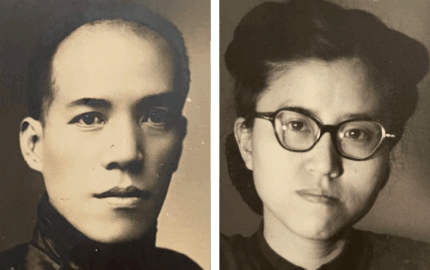“Stalled Justice,” a Chicago Tribune investigation into the Cook County’s dysfunctional court system in Illinois, is the winner of the 2023 Taylor Family Award for Fairness in Journalism.
Reported by Joe Mahr and Megan Crepeau, the four-part investigation exposed the massive delays and logjams that for years have plagued the Cook County courts. The reporters revealed the toll the problems have taken on both victims of crime seeking justice and defendants in jail who have waited years for trials.
Judges also selected two finalists for the Taylor Award:
- “Alone and Exploited,” a six-part series by New York Times reporter Hannah Dreier, exposed the hidden world and stunning scope of migrant child labor in the U.S. and the many policy failures that have led to a shadow workforce across the country.
- “The Mercy Workers,” a story by Marshall Project reporter Maurice Chammah, offers a rare look at a secretive profession of mitigation specialists who attempt to save prisoners from the death penalty.
The Taylor Award Winner: Chicago Tribune

In “Stalled Justice” Chicago Tribune reporters Joe Mahr and Megan Crepeau dug deep to understand why Illinois’ Cook County court system for years has been overwhelmed by delays that keeps defendants stuck in jail without hope of a speedy trial.
Through research and data analysis, the reporters identified the layers of bureaucracy and indifference that have allowed the problems to persist and have resulted in a system that is anything but fair. They found that murder cases typically take four years or longer to resolve, longer than in any other major American city.
To do their reporting, Mahr and Crepeau filed more than three dozen record requests, analyzed millions of lines of raw data, examined 40 court files, attended more than 1,000 hearings and reviewed five decades’ worth of studies chronicling problems in Chicago’s courts and the long-ignored recommendations to fix them.
The reporters took pains to treat both the families of murder victims and suspects harmed by delays with care and sensitivity. They named those who were in positions to make a difference and backed their findings with national data. And they rewrote stories at the last minute when subjects changed their minds about inclusion in the story.
More than a dozen detainees agreed to speak on the record. All said they felt cheated by a system that forced them to wait in jail for years and ignored in court by attorneys and judges who agreed to multiple delays. Although the defendants could formally request a speedy trial, that would likely mean proceeding without complete discovery or resolved motions.
In addition to reporters Joe Mahr and Megan Crepeau, the Chicago Tribune staff who contributed to the coverage include photojournalist Brian Cassella and editors Jeff Coen and Kaarin Tisue.
Taylor Award judge Ken Armstrong said: “The presumption of innocence in our criminal justice system tends to be more myth than reality. But the Chicago Tribune treats the presumption seriously in this exceptional series on the impact of stunning delays in the Cook County courts. The series accounts for all the people hurt by the court system’s failures, be they a relative of a murder victim or a defendant awaiting trial. This could have been a laborious read, full of procedural jargon. It’s anything but. The reporting is deep and thoughtful, the writing clean and clear.”
Taylor judge Wonbo Woo added: “The Chicago Tribune’s “Stalled Justice” series represents the best in local journalism. The series had a very clear mandate, based on principles of fairness, and the reporters went to great lengths to seek out sources from all sides — from defendants to relatives to prosecutors to judges and administrators. They further took steps to ensure those sources were well-informed about their participation and were thoughtful in their approach to covering very sensitive issues.”
Taylor Award Finalists
“Alone and Exploited,” (The New York Times)

In her powerful “Alone and Exploited” investigation, New York Times reporter Hannah Dreier revealed the broad scope of America’s hidden migrant child workforce and the policy failures that allowed children to work in dangerous, sometimes life-threatening conditions.
Dreier discovered migrant children working in all 50 states, often making household products for companies including Fruit of the Loom, Ford, General Mills, J. Crew, and Ben & Jerry’s. They held jobs in factories, on construction sites and in slaughterhouses, sometimes working overnight shifts to earn money to send to their families back home and often while trying to go to school.
To conduct her research and do interviews, Dreier traveled to 13 states and visited schools, social functions and factory parking lots during shift changes. She earned the trust of hundreds of working children as well as federal contractors, government social workers, private auditors, hiring managers and trafficking investigators across the country. Sources at the White House and federal agencies also shared information showing that officials repeatedly ignored the growing problem of child labor.
Recognizing the vulnerability of her subjects, Dreier also took care to protect the children she interviewed, naming only those whose sponsors in the U.S. and parents at home gave permission. She also guarded the identities of undocumented adults she spoke with and did not profile children if contacting a sponsor would put them at risk.
Dreier, who worked closely with New York Times senior investigations editor Kirsten Danis to produce the series, created important databases that listed children killed on the job, showed how infrequently the government prosecuted cases of child labor trafficking and chronicled workplace injuries. The Times has shared that information publicly to help communities and news outlets across the country.
The series has had tremendous impact and swiftly led to significant government and corporate reforms. The investigation is also winner of the 2023 Worth Bingham Prize for Investigative Journalism.
Taylor judge Raquel Rutledge said: “Hannah Dreier goes to great lengths to ensure readers understand the nuances throughout the ecosystem that results in migrant children working in factories and on rooftops throughout the United States. From a fairness perspective, what sent this one over the top was how she was able to show the hearts of teachers who wanted to help but felt speaking up would make problems worse for the children and their families. They were not portrayed as two-dimensional careless bystanders. Those types of insights pervaded the whole series.”
“The Mercy Workers” (The Marshall Project)

Reporter Maurice Chammah spent more than three years preparing “The Mercy Workers,” a rare look at a secretive work of “mitigation specialists” who work to save prisoners from the death penalty.
Chammah went into the project fully aware of the ethical and legal dilemmas the reporting might cause. He took steps to carefully balance readers’ understanding of both perpetrators and victims and to protect his own journalistic integrity in the process.
His reporting profiles Sara Baldwin, a mitigation specialist and leader in the field, who works to convince prosecutors and jurors to spare her clients from severe punishments, like the death penalty, by researching their life stories. He also followed the case of prisoner James Bernard Belcher, who had been convicted of the rape and murder of Jennifer Embry. The Marshall Project decided to hold publication of the story until after Belcher’s trial.
Chammah spent time on the road with Baldwin as she did her work and he read thousands of pages of court and prison records to tell the story of how Belcher was traumatized by his teenage years behind bars. He also spent two weeks in Jacksonville reporting on the sentencing trial, sitting next to Belcher’s mother as she learned her son’s fate. Chammah also spoke with jurors and went back to sources who had shared information off the record to finish his reporting.
Chammah’s article is a unique and carefully crafted look at the realities of the criminal justice system and issues surrounding mass incarceration in the United States. An illustrated companion piece accompanied Chammah’s reporting.
Marshall Project staff and freelancers who contributed to the report include editor Akiba Solomon; illustrator Jackie Roche; multimedia editor Celina Fang; editors for the illustrated version Raghuram Vadarevu and Meredith Rizzo; photographers Agnes Lopez and Octavio Jones; collage artist Melanie Garcia; developer Katie Park; production coordinator Mara Corbett; copy editor Ghazala Irshad; and videographer Taylor Vorburger.
Taylor judge Brett Murphy recognized the degree of difficulty in reporting the story and covering the extremely sensitive subject matter, saying: “Convicted murderers are not naturally sympathetic subjects. Chammah handled it deftly. The writing was compelling but not overly sentimental. He gained the trust of a very vulnerable population and used the ‘mercy workers’ as a vehicle to reveal the myriad problems of the death penalty system.”
The journalists who helped judge the 2023 Taylor Award competition are Tony Plohetski, a reporter for the Austin American-Statesman and winner of the 2022 Taylor Award; Raquel Rutledge, investigations editor at The Examination and a 2012 Nieman Fellow and Ken Armstrong, a ProPublica reporter and a 2001 Nieman Fellow, who together were finalists for the 2022 Taylor Award; Brett Murphy a ProPublica reporter and finalist for the 2022 Taylor Award; and Wonbo Woo, a New York-based producer and 2016 Nieman Fellow who teaches at Columbia Journalism School. Armstrong and Murphy selected entries for the final round, but recused themselves from choosing the winner and finalists due to conflicts of interest.
The Taylor Award is presented by the Nieman Foundation for Journalism at Harvard. The honor includes a $10,000 prize for the winner and $1,000 each for the two finalists. The award program was established through gifts for an endowment by members of the Taylor family, who published The Boston Globe from 1872 to 1999. The purpose of the award is to encourage fairness in news coverage by America’s journalists and news organizations.
The Nieman Foundation for Journalism at Harvard educates leaders in journalism, promotes innovation and elevates the standards of the profession. More than 1,700 journalists from 100 countries have been awarded Nieman Fellowships since 1938. The foundation also publishes Nieman Reports, a website and print magazine covering thought leadership in journalism; Nieman Journalism Lab, a website reporting on the future of news, innovation and best practices in the digital media age; and Nieman Storyboard, a website showcasing exceptional narrative journalism and nonfiction storytelling.



